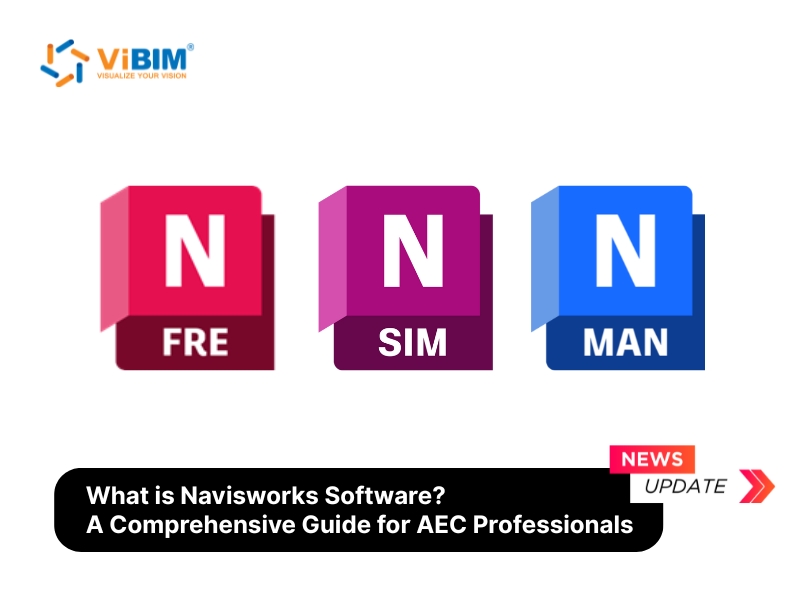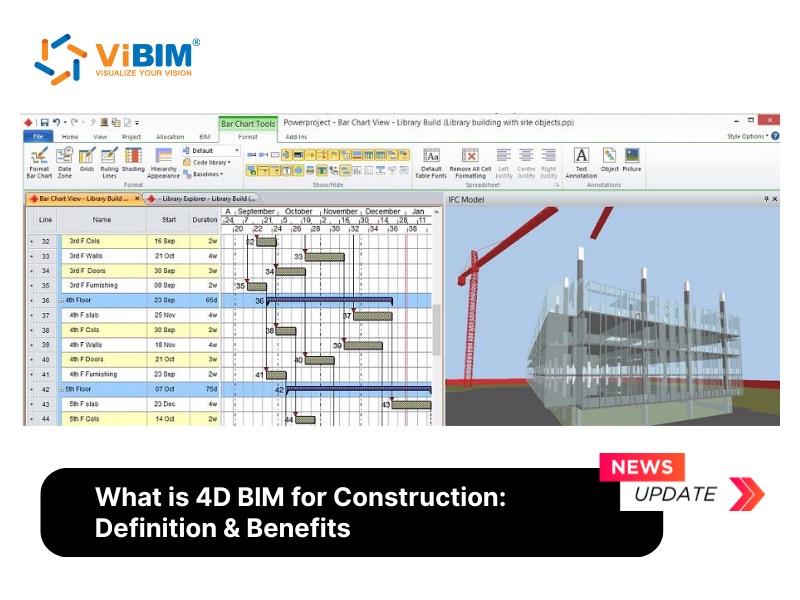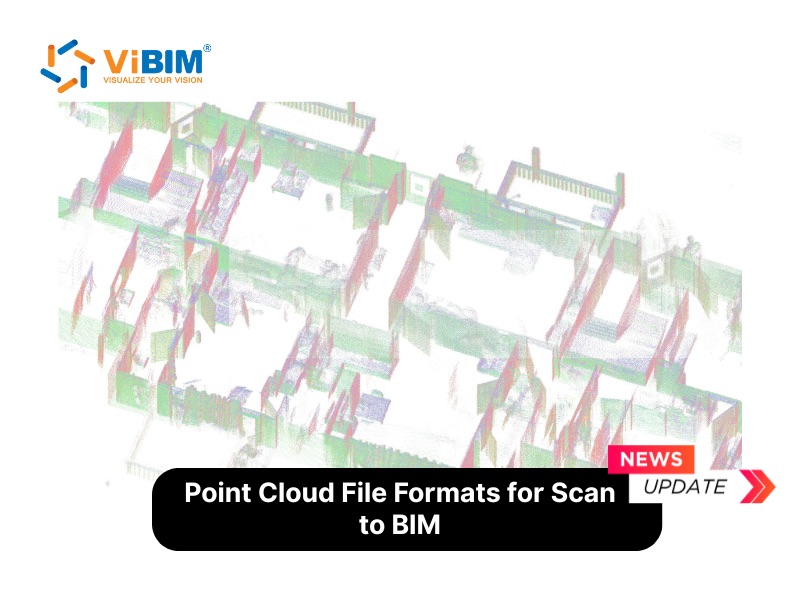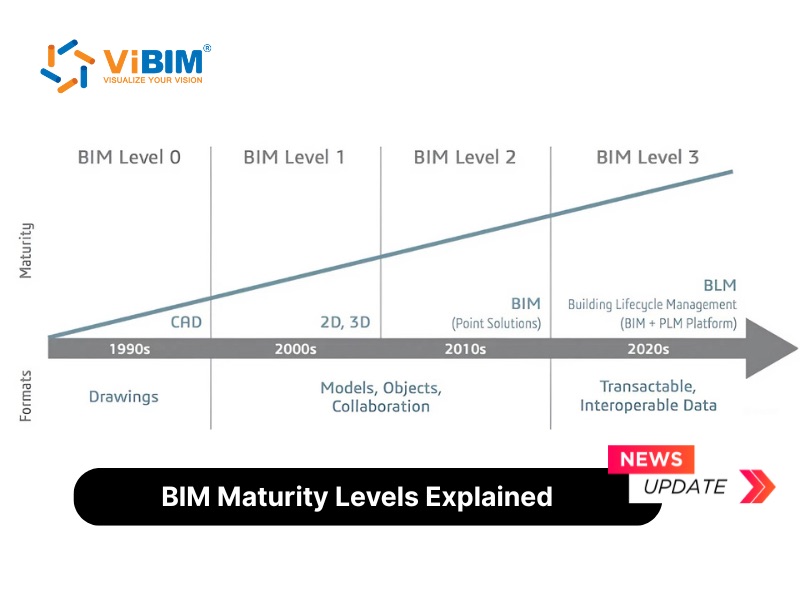Scan to BIM transforms traditional construction workflows by converting point cloud data from 3D laser scanning into precise Building Information Models. This technology bridges the gap between existing structures and digital design, allowing architects, engineers, and construction professionals to work with accurate spatial data. The construction industry increasingly adopts this approach as it addresses longstanding challenges in project documentation, design accuracy, and collaboration.
The process captures detailed measurements of buildings, infrastructure, and sites through advanced scanning equipment. These measurements become intelligent 3D models that support design decisions, construction planning, and facility management. Projects benefit from reduced errors, faster completion times, and improved cost control. The technology proves particularly valuable for renovation projects, historical preservation, and complex infrastructure development where traditional measurement methods fall short.
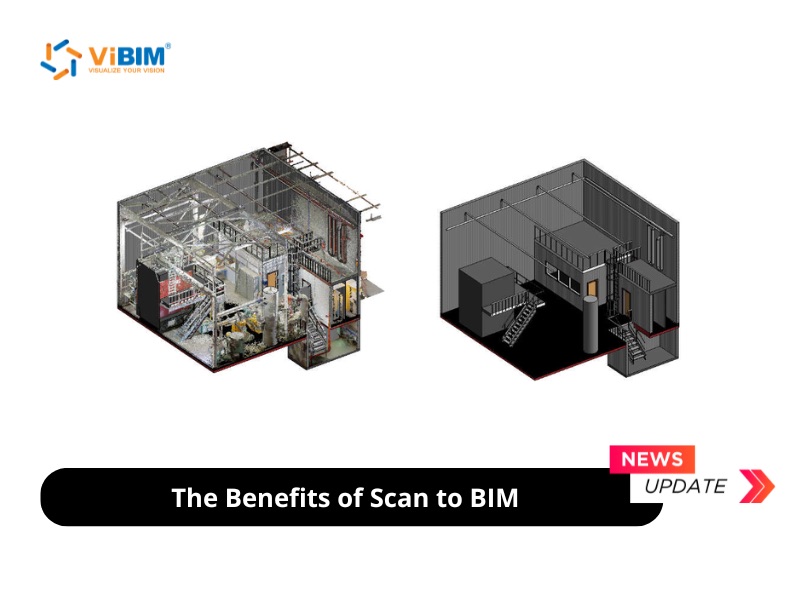
Top 5 Benefits of Scan to BIM Technology in AEC Industry
The primary benefit of Scan to BIM is accuracy, ensuring your project starts with a precise digital copy of the actual site conditions, eliminating the risks of using potentially flawed old plans. This reliable information makes a huge difference throughout the project. Here are some of the top benefits driving its adoption:
Accurate 3D Representation
One of the most significant advantages of Scan to BIM is the creation of highly accurate 3D representations of existing conditions. Laser scanners capture millions of data points with millimetre-level precision, creating a detailed point cloud that reflects the true “as-is” state of a building or site. This eliminates the inaccuracies and guesswork inherent in traditional manual measurement techniques. Converting this point cloud into a BIM model provides designers and engineers with a reliable foundation, ensuring that new designs are based on precise existing geometry, including complex shapes and hidden elements, leading to better-informed decisions from the outset.
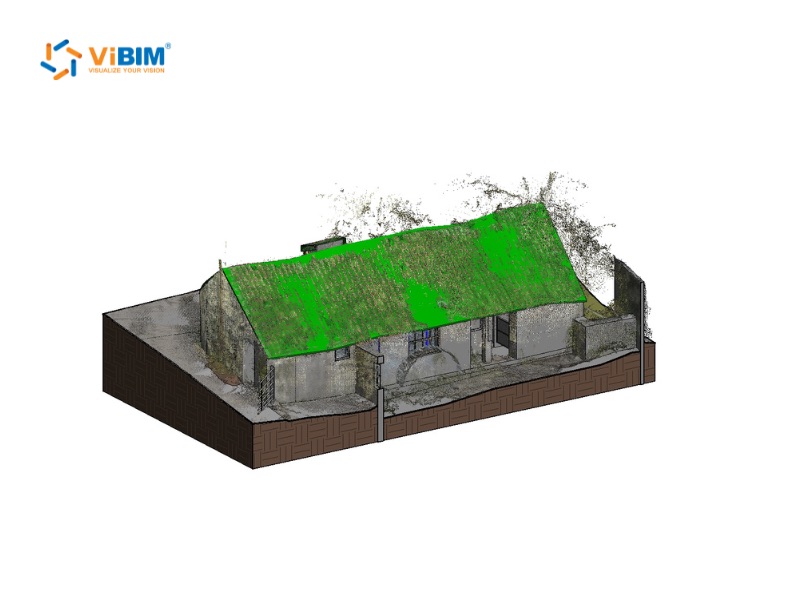
Learn more: What is Scan to BIM? Industry Applications of Scan to BIM
Time and Cost Savings
Implementing Scan to BIM can lead to substantial time and cost savings throughout the project lifecycle, particularly for renovation and retrofit projects. The accurate 3D models derived from point clouds provide surveyors and project teams with precise insights, enabling informed decision-making and reducing reliance on time-consuming manual measurements and site visits. This enhanced accuracy directly minimizes errors and rework during design and construction, streamlining processes and significantly reducing the overall project schedule and associated costs. Furthermore, the precise data facilitates faster and more accurate quantity takeoffs (QTOs) and improves project planning, leading to optimized resource use and increased project profitability by reducing material waste and labor expenses.
Enhanced Collaboration and Communication
Scan to BIM significantly enhances collaboration and communication among all project stakeholders, including architects, engineers, contractors, and even facility managers. By creating detailed, easily shared, and accessible BIM models from scan data, it provides a single, centralized platform for everyone to visualize the project’s existing conditions. This shared understanding helps to reduce communication ambiguities and potential misunderstandings, fostering more cohesive teamwork. Identifying and addressing potential issues virtually within the model before they arise on-site mitigates errors and leads to better, more informed decision-making, ultimately contributing to improved project outcomes and efficiency.
Reduced Risks and Errors
By providing highly accurate as-built data, Scan to BIM technology dramatically reduces the risk of errors during the design and construction phases. Manual measurements can lead to discrepancies and costly mistakes on-site. A precise BIM model derived from a laser scan helps identify potential conflicts, such as clashes between new and existing building elements or inconsistencies with original drawings, minimizing surprises and mitigating risks during construction.
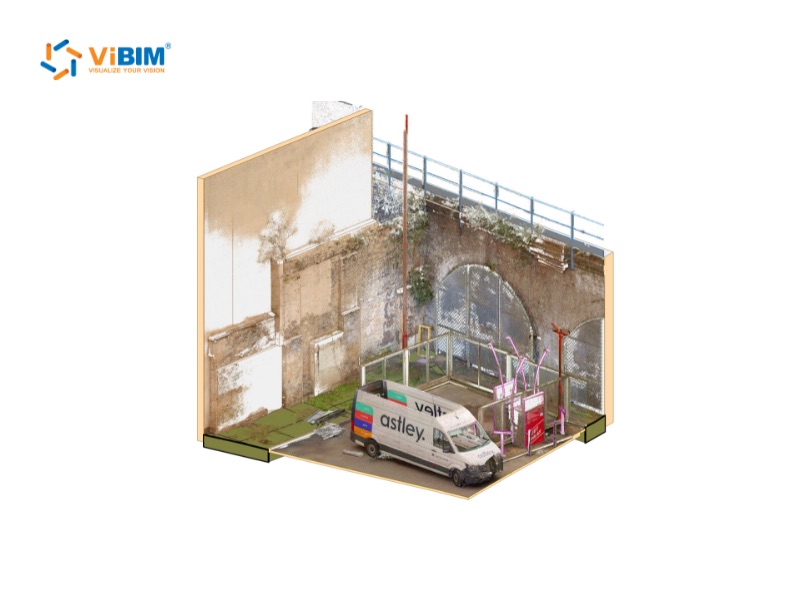
Streamlined Renovation and Retrofitting
Scan to BIM is particularly transformative for renovation, refurbishment, and retrofitting projects. Older buildings often lack accurate or complete as-built documentation, making planning modifications challenging and risky. Scan to BIM overcomes this by capturing the precise geometry and location of existing structural elements, MEP systems, and architectural features, regardless of complexity or age. This detailed information is crucial for designing additions, planning system upgrades, or ensuring compliance with new regulations. It allows designers to seamlessly integrate new components with the existing structure, ensuring feasibility and minimizing intrusive investigations.
Learn more: How much does scan to bim cost? Pricing Guide and Key Factors
Real-World Applications of Scan to BIM
The practical impact of Scan to BIM technology is best illustrated through real-world applications. Businesses are leveraging this process to overcome complex project challenges and achieve superior outcomes. Here are two notable case studies demonstrating the power and versatility of Scan to BIM as implemented by ViBIM:
Case Study 1: Large Commercial Complex
Project Overview & Needs: This large commercial complex project in the UK spanned a vast 130,000 m², necessitating detailed architectural and structural documentation of the existing main building, surrounding structures, and complex topography for renovation design and comprehensive management. The scale presented significant challenges, as the point cloud data arrived in stages rather than all at once, creating continuity issues. The project team needed to coordinate multiple specialists working simultaneously while maintaining consistent quality across this enormous facility.
Benefits of Scan to BIM: Leveraging Scan to BIM, an accurate as-built model was created, offering a precise foundation for assessing the complex’s existing state, crucial for planning renovation and redesign efforts. This detailed model enabled confident spatial reconfigurations and the seamless integration of new building systems. Furthermore, the scan data and resulting BIM model facilitated the creation of compelling visualizations for marketing and project documentation and yielded high-detail drawings containing rich information necessary for smooth downstream BIM processes and effective long-term asset management.
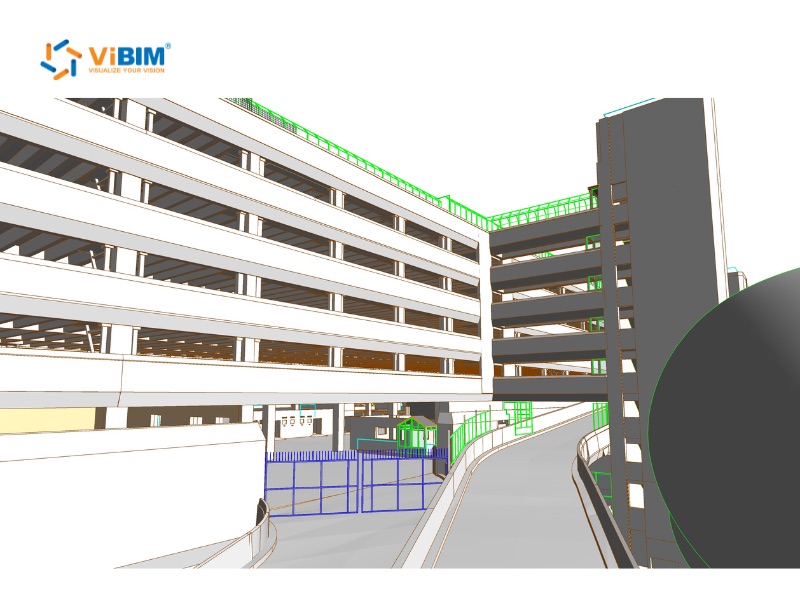
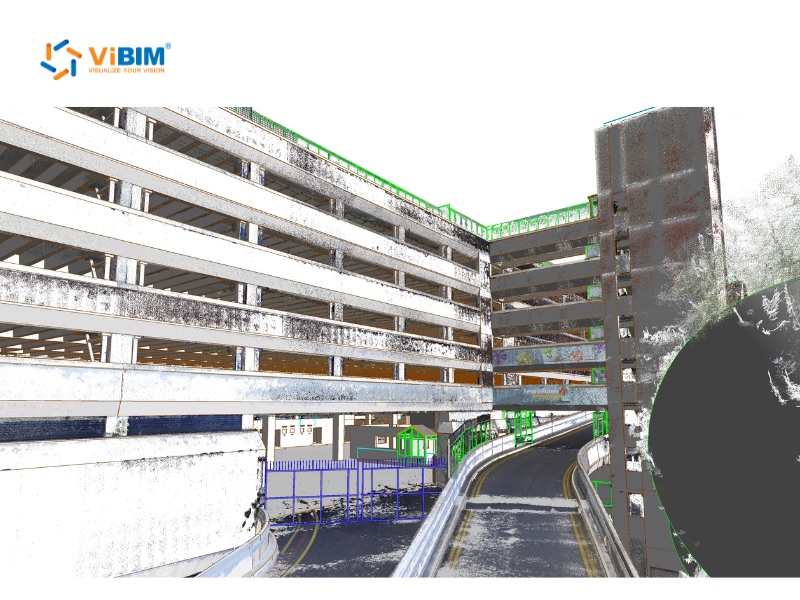
Case Study 2: Classical Church Restoration
Project Overview & Needs: Project 253.UK focused on a classical church spanning approximately 2,000 m² in the UK. The core requirement was to produce a highly accurate architectural and structural as-built model, including the surrounding topography and neighboring building facades. A critical objective was to ensure precise representation of the exterior material details and clearly delineate different material zones, meeting a high level of detail (LOD 400) for both the church and its surrounding landscape to fulfill specific client requirements.
Benefits of Scan to BIM: The application of Scan to BIM provided a millimetre-accurate model of the church’s complex and detailed architecture, including its intricate vaulted ceiling, eliminating the inaccuracies inherent in manual surveying. This precise digital documentation was vital for planning and executing sensitive renovation and repair work on the historical structure, allowing for accurate identification of repair areas and precise material quantity calculations. Beyond immediate renovation needs, the detailed point cloud and resultant BIM model serve as an invaluable resource for historical preservation and documentation, facilitating in-depth research and providing a basis for creating accurate digital replicas or integrating into asset management systems for future maintenance and planning.
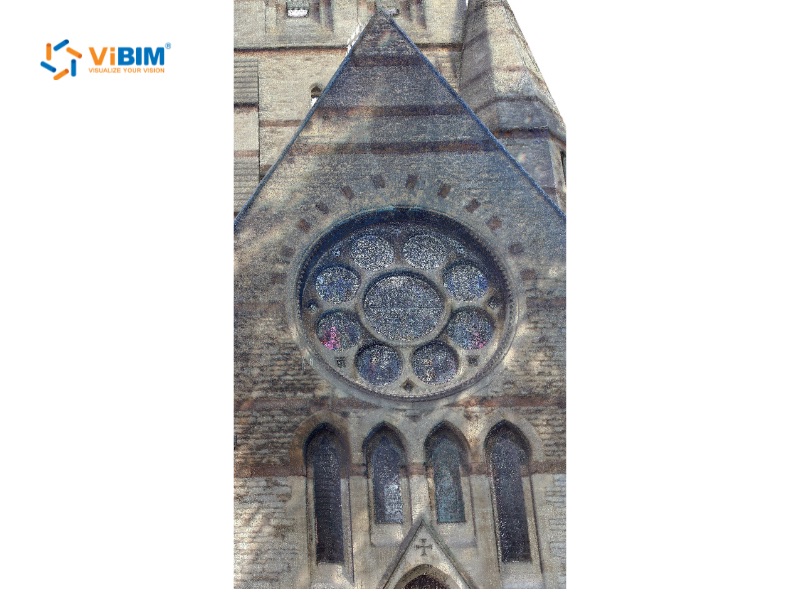

Challenges in Adopting Scan to BIM
While the benefits of Scan to BIM are significant, organizations may encounter certain challenges in adopting Scan to BIM. Awareness of these hurdles is key to successful integration.
Data Complexity and Volume
One of the primary challenges is managing the sheer volume and complexity of the data generated by laser scanners. Point clouds consist of millions, or even billions, of data points, requiring powerful hardware and specialized software for processing and manipulation. Converting this dense point cloud data into an intelligent BIM model that accurately represents building elements can be a time-consuming and data-intensive process, requiring expertise in data handling and modeling software.
Data Integration and Alignment
Integrating the scan data with existing project workflows and ensuring its alignment with other project information can also be challenging. The point cloud needs to be accurately registered and aligned within a coordinate system that matches the project’s standards. Furthermore, integrating the resulting BIM model with other software platforms used for design, analysis, and construction management requires ensuring interoperability and smooth data exchange, which can sometimes be complex.
Interoperability and Software Compatibility
Interoperability between different scanning hardware, processing software, and BIM platforms remains a challenge. Data formats can vary, and ensuring seamless data transfer and compatibility across the entire workflow requires careful planning and potentially the use of conversion tools or middleware. The ability of different software to effectively read, write, and utilize the data from the scan to BIM process is crucial for a streamlined workflow.
See more: Best scan to BIM software you to know for your project
High Initial Investment and Budget Constraints
Scan to BIM requires a substantial upfront investment. High-quality laser scanning hardware, specialized point cloud processing and BIM modeling software licenses (e.g., Revit), powerful computing workstations capable of handling large datasets, and personnel training all contribute to significant initial costs. This capital outlay can be a major deterrent, particularly for smaller firms or projects operating under tight budgets, even if the long-term ROI is favorable.
Skill and Expertise Gaps
Adopting Scan to BIM requires a skilled workforce proficient in operating laser scanners, processing point cloud data, and creating detailed BIM models from this information. There can be a skill and expertise gap within organizations, necessitating investment in training or the hiring of specialized personnel. Understanding the nuances of data capture, registration, and modeling is essential for maximizing the benefits of this technology.
Defining the Appropriate Scope and Level of Detail (LOD)
A critical challenge is determining the right Level of Detail (LOD) needed for the point cloud conversion into a BIM model. Over-modeling, capturing excessive detail beyond project requirements, wastes valuable time, budget, and resources. Conversely, under-modeling may result in a model that lacks crucial information needed for design, analysis, or construction coordination. Striking the right balance requires clear project goals and explicit agreement with stakeholders on the required accuracy and detail level to ensure the model is fit for purpose.
On-Site Data Capture Quality and Consistency
Poor scanning practices on site, such as inadequate scan coverage leading to ‘occlusions’ (missing data in shadows), insufficient overlap between scans, scanning in unsuitable lighting conditions, or failing to account for movement, can result in incomplete, inaccurate, or noisy point clouds. Furthermore, critical errors in point cloud registration, where individual scans are incorrectly stitched together, or significant coordinate misalignment can corrupt the foundational accuracy of the dataset. These inaccuracies can be so severe that the entire Revit model, meticulously built from this flawed data, may require complete reconstruction. It’s crucial to understand that remodeling in Revit is not a simple adjustment; it is a complex and demanding process. Consequently, such errors not only necessitate time-consuming data cleanup or costly re-surveying but also lead to substantial increases in project costs and significant extensions to project timelines, severely compromising the reliability of the final BIM model.
So how to manage the quality of scan to bim model? A Comprehensive Guide
Organizational Change Resistance
Adopting Scan to BIM can face resistance within organizations. Teams accustomed to traditional 2D workflows or manual surveying techniques may be hesitant to embrace new tools, processes, and collaborative methods. Successfully overcoming this inertia often requires strong leadership endorsement, dedicated training programs, clear communication highlighting the benefits for all involved, and a thoughtful change management plan.
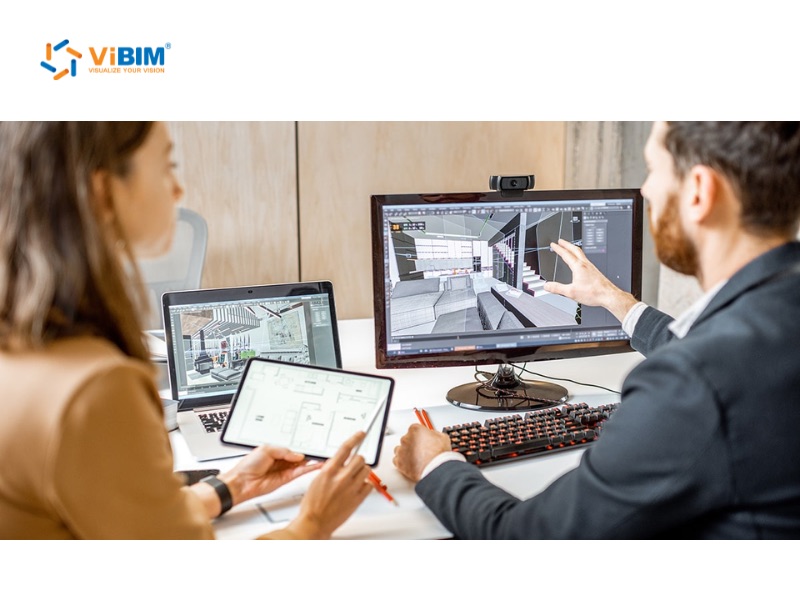
The Future of Scan to BIM
The technology has matured significantly over the past decade, establishing proven technical standards and industry best practices. This maturation cycle creates broader market awareness and confidence in scan to BIM capabilities. Professional service providers like ViBIM have emerged to support organizations seeking high-quality scan to BIM solutions for large-scale projects.
The future of Scan to BIM technology appears bright, with continuous advancements promising to further enhance its capabilities and integration within the AEC industry. As scanning technology becomes faster, more portable, and more affordable, its adoption is expected to increase significantly. Software is also evolving, with improved automation features for point cloud processing and model creation, reducing the manual effort required.
Crucially, the integration of artificial intelligence (AI) and machine learning (ML) is poised to revolutionize the Scan to BIM process. AI algorithms can automate the recognition and classification of building elements within a point cloud, drastically speeding up the modeling process. ML can learn from existing data to improve the accuracy and efficiency of partially converting scans into intelligent BIM objects. These advancements will lead to even greater accuracy, faster turnaround times, and more comprehensive digital twins of built environments, further amplifying the benefits of Scan to BIM, such as improved decision-making, enhanced facility management, and more sustainable building practices.
In conclusion, Scan to BIM is more than just a technological trend; it’s a powerful methodology that is fundamentally changing how the AEC industry approaches projects involving existing structures. The ability to capture highly accurate as-built conditions and translate them into intelligent BIM models delivers significant benefits in terms of accuracy, time and cost savings, collaboration, and risk reduction. While challenges exist in data management and adoption, ongoing advancements and the integration of cutting-edge technologies like AI and ML are paving the way for an even more streamlined and impactful future for Scan to BIM. Embracing this technology is becoming increasingly essential for firms looking to enhance efficiency, improve project outcomes, and stay competitive in the evolving landscape of the built environment.
For organizations looking to implement this powerful methodology, ViBIM provides expert Scan to BIM services. We bridge the gap between the physical site and the digital model, delivering the accurate, as-built data needed to enhance project efficiency and reduce costly rework.






